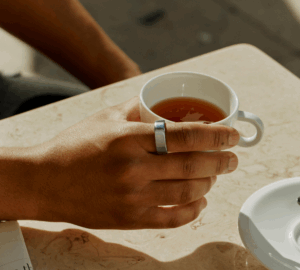Different sleeping positions offer unique benefits and drawbacks, and what works best for one person may not work for another. While some positions will help you get a good night’s sleep, others can lead to discomfort and pain, resulting in poor sleep.
One popular sleeping position is the “starfish” sleeping position.
A person in this position lies on their back with their arms and legs spread out so their body resembles, you guessed it, a starfish. According to a sleep study commissioned by the Better Sleep Council, approximately 7% of people prefer to sleep in the starfish position.
This sleeping style offers both benefits and drawbacks — below, we’ll clear up some common misconceptions about starfish pose sleeping, as well as how to optimize it if it’s your preferred position.
RELATED: Why Do I Sleep with My Knees Up?
Debunking 3 Misconceptions About the Starfish Sleeping Position
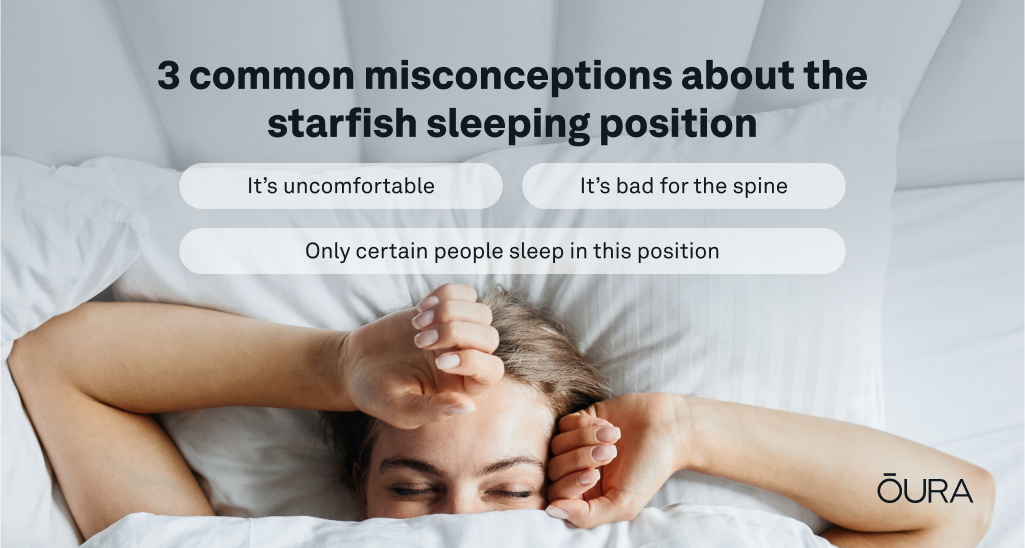
Sleeping on your back with your arms overhead may appear unnatural to some people, which is why one of the most common misconceptions about this sleeping position is that it’s uncomfortable.
The truth is starfish pose sleeping is a subjective experience that varies from person to person. While back sleeping positions can increase back pain for some sleepers, and sleeping with your arms up can place unnecessary pressure on the shoulder nerves, some people find the starfish sleeping position to be very comfortable and painless.
Another misconception is that only certain people sleep in the starfish position. This is not true since anyone can sleep in this position, regardless of age, gender, or physical ability.
Finally, some people believe that the starfish position is not good for the spine. This is not necessarily true. In fact, back sleeping, including the starfish position, can be healthy for the spine if the proper support is provided.
The Effects of the Starfish Sleep Position on Sleep Quality
Like any other sleep position, starfish pose sleeping has its benefits and drawbacks. Let’s start with the pros:
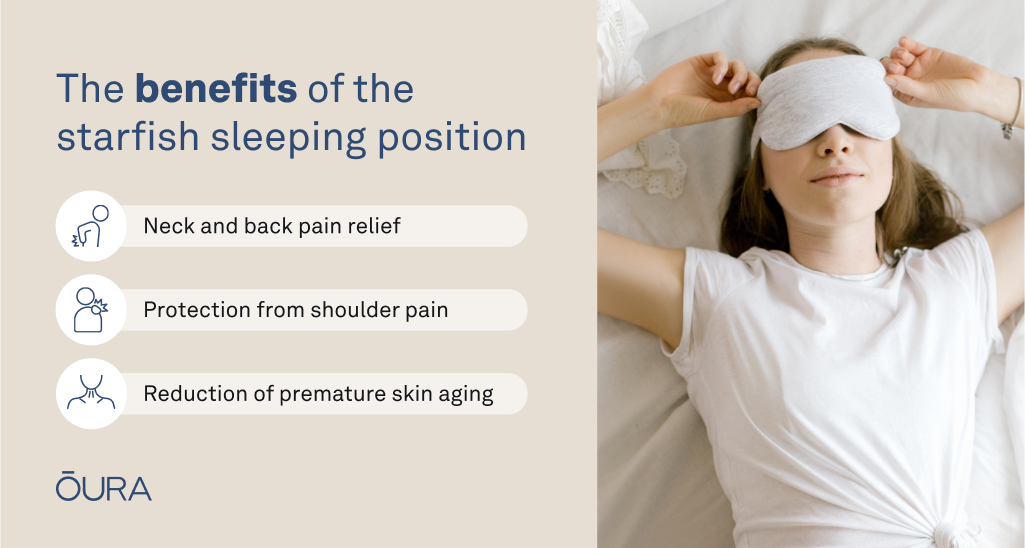
Neck and back pain relief
Back and neck pain affect the majority of adults at some point in their lives. 60-80% of adults experience back pain that interferes with daily activities, and 20-70% will experience neck pain.
The good news is that proper spinal alignment can help prevent the development of neck and back pain. One way to get this alignment is through back sleeping positions, like the starfish, which make it easier to keep the spine aligned. Research has shown that the starfish sleeping position can alleviate neck and lower back pain, helping you to sleep better.
Protection from shoulder pain
Similar to neck and back pain, shoulder pain is one of the most common pain syndromes affecting 18-26% of adults at any given time. However, studies have shown that shoulder pain is less common among starfish sleepers, suggesting that sleeping with your arms overhead can help protect against shoulder pain and thus improve sleep quality.
Reduction of premature skin aging
When you sleep on your back, you avoid pressing your face against the pillow or mattress. As a result, there’s no facial distortion, such as that from skin pulling, stretching, or compression, which can lead to premature wrinkling and the development of fine lines.
But despite being a good position for some people, the starfish is not best suited for everyone.
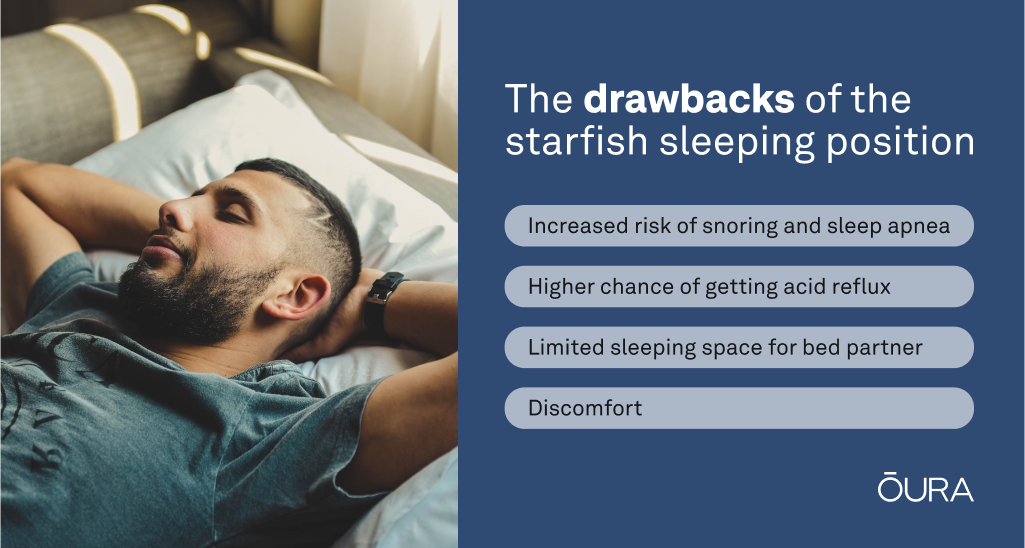
Increased risk of snoring and sleep apnea
As is commonly associated with back sleeping positions, the starfish position increases the likelihood of snoring and sleep apnea, both of which can disrupt sleep. Lying on your back causes your tongue, jaw, and other soft tissue to fall back on your throat, thereby narrowing your airway and causing breathing difficulties.
In one study, researchers found that the severity of sleep apnea doubled when the research subjects were sleeping on their backs compared to when they were sleeping on their sides. Research on non-apneic snorers has also found that snoring time and intensity are higher for people who sleep on their backs compared to side sleepers.
Not sure if starfish pose sleeping is worsening your snoring or sleep apnea? A sleep tracker like the Oura Ring can provide insights into potential sleep disturbances and track changes in breathing with its blood oxygen sensing features. The SpO2 metric detects the amount of oxygen in your blood, while the breathing disturbances metric shows suspected disturbances during your sleep. These may help you to understand whether you should see a physician to check whether you have sleep apnea.
READ MORE: Sleep Apnea Defined — And How to Treat It
Higher chance of getting acid reflux
People have a higher chance of experiencing chronic acid reflux or gastroesophageal reflux disease (GERD) when lying in bed. This is because gravity can’t keep everything down in the stomach when you’re not sitting up.
What’s more, when sleeping on your back, the chances of getting GERD are higher because if acid escapes from your stomach, it can flow back freely into the esophagus and stay there. In one study, researchers found that acid reflux episodes were more frequent among people who sleep on their backs, such as in the starfish sleeping position.
GERD is a well-known cause of sleeping problems, affecting people’s ability to fall and stay asleep, and resulting in lower sleep quality.
Limiting sleeping space for a bed partner
If you have a bed partner, the starfish sleeping position can be constricting because it takes up a lot of space in the bed. Not only that, but starfish pose sleeping can limit your partner’s movement, making it difficult for them to get comfortable.
They may feel confined to a small corner of the bed, unable to stretch or move freely. This can cause discomfort, restlessness, and even a lack of sleep, which can collectively affect their mood and energy levels the following day.
RELATED: What Is a “Sleep Divorce” & Is It Right for Your Relationship?
Discomfort for some people
As mentioned earlier, the starfish position can be uncomfortable for some people, particularly when there’s little to no support for the neck, head, and back. This increases the risk of pain and reduced sleep quality. If you find that the starfish sleeping position results in pain and muscle stiffness, it’s a good idea to find a new sleeping position.
Tips for Improving Your Sleep in the Starfish Sleeping Position
If you find that your body favors the starfish sleeping position, the following are some practical tips for optimizing your sleep in the position.
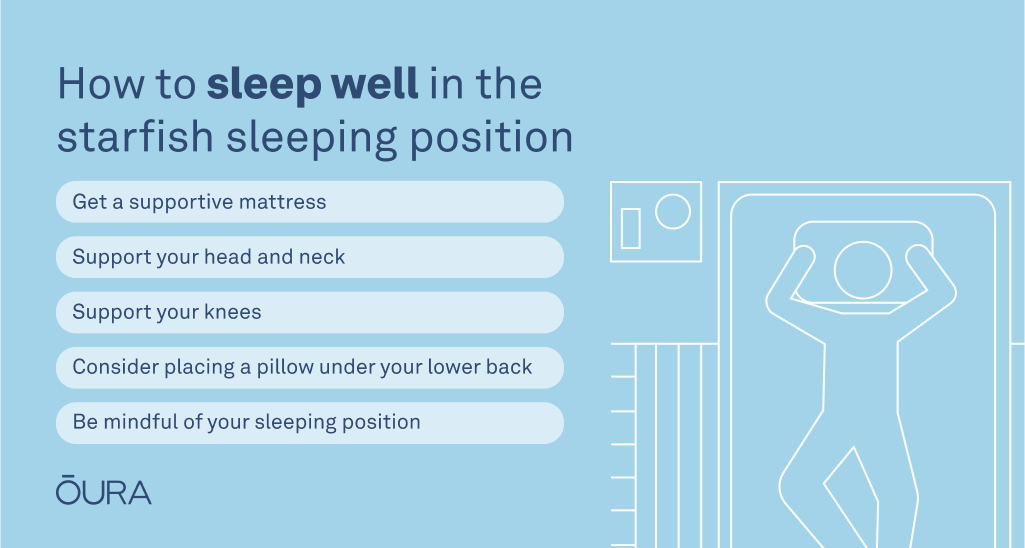
Get a supportive mattress
A supportive mattress is crucial for any sleeping position, including the starfish. A good, sturdy mattress will help to reduce stress on your back, distribute your weight more effectively, and prevent any discomfort or pain that might keep you up at night. As such, it’s a good idea to invest in a high-quality mattress that offers the right level of support for your body type and sleeping style.
Consider using pillows
Using pillows might seem like a small adjustment, but it can make a big difference in your sleep quality. Pillows can help to support your head, neck, knees, and back while you sleep, which can reduce discomfort and make it easier to stay in the starfish position all night long. Plus, it’s a great way to add an extra layer of comfort to your bed.
When applying these tips, it’s also important to be mindful of your sleeping position. Although it may not always be possible once you’re sleeping, try to keep your legs and arms symmetrical to avoid spine misalignment, discomfort, and pain.
Optimizing Your Sleep Quality for Improved Health
Your sleep position affects the quality of your sleep, which, in turn, affects your overall health. Ultimately, it’s crucial to find a sleeping position that works best for you and your individual needs. By doing this, you can improve your sleep quality and lead a healthier, happier, and more refreshed life.
In addition to finding your ideal sleep position, you also want to ensure that your sleep hygiene is good. After all, you can sleep in a great position, but if other aspects of your bedtime routine and environment are not good, you may still find it difficult to sleep well.
Oura members can stay on top of their sleep patterns and behaviors using Tags. Moreover, they can accurately track their sleep cycles and discover what may be behind their sleep disruptions using Oura’s sleep staging algorithm.
RELATED: 5 Ways to Upgrade Your Sleep Hygiene
